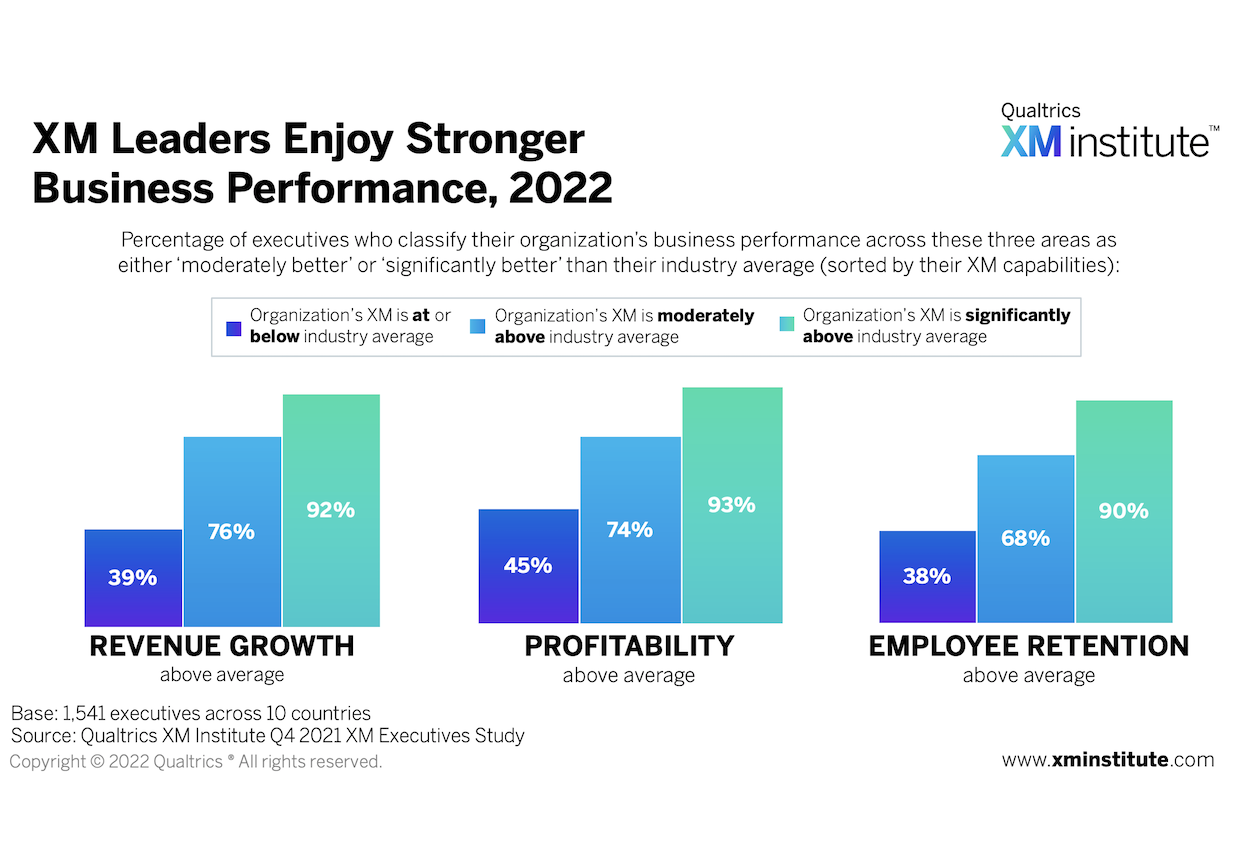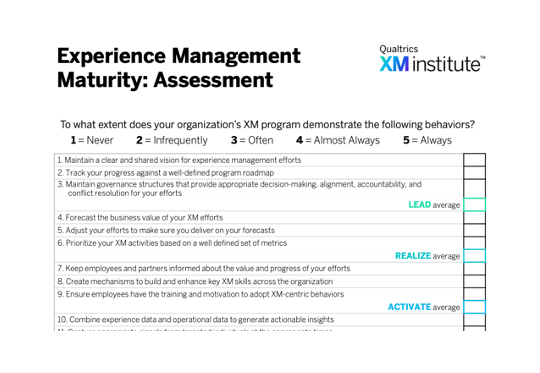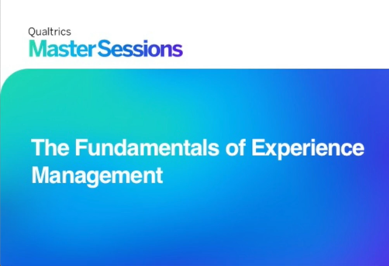Use this Launchpad as a starting place to understand what Experience Management is and why it’s becoming increasingly essential to organizations’ business success. Then explore the key resources included at the bottom of the page to expand your knowledge of this XM topic.
The Fundamentals
The landscape in which businesses operate is changing. An ever-increasing flow of information is shifting power away from organizations and into the hands of individuals, and as a result, customers, employees, and prospects are becoming more discerning and more demanding. At the same time, new technologies are redefining business models and shortening product lifecycles.
To succeed in this rapidly changing environment, companies need to develop a new set of capabilities, one that allows them to deliver on what people really care about – their experiences.
This approach is called Experience Management (XM), which refers to:
The discipline of using both experience data (X-data) and operational data (O-data) to measure and improve the four core experiences of business: customer, employee, product, and brand.
The word discipline is key to this definition. XM is not just a set of activities that organizations can add on to their existing to-do list, and it’s not just about making a few isolated good decisions. To succeed at Experience Management, a company must make XM an organizational habit that is ingrained into its everyday business decisions and processes.
Organizations establish XM as a discipline by adopting the XM Operating Framework, which is made up of three components: Technology, Competency, and Culture. While all three elements of this framework are important, organizations should particularly concentrate on mastering the Competency component. This component is made up of six distinct XM Competencies, all of which are enabled by technology and nurtured by an organization’s culture.
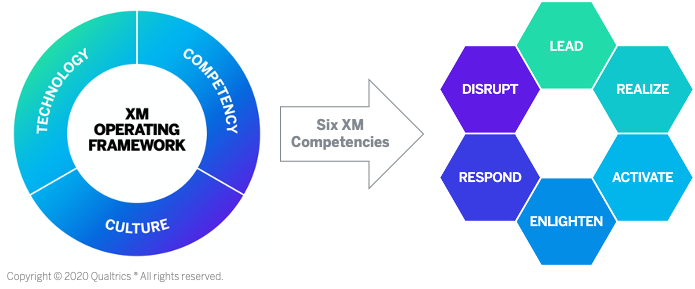
As organizations build their XM maturity, they will become increasingly responsive to any changes and shifts across their ecosystem. That’s because XM establishes three essential capabilities:
Propagate Insights
Companies who practice XM will share relevant insights in tailored formats with the people across the organization who are best equipped to take action on that information.
Rapidly Adapt
Finally, XM doesn’t just help an organization capture and distribute valuable insights, it empowers the business to quickly and meaningfully act on that information.
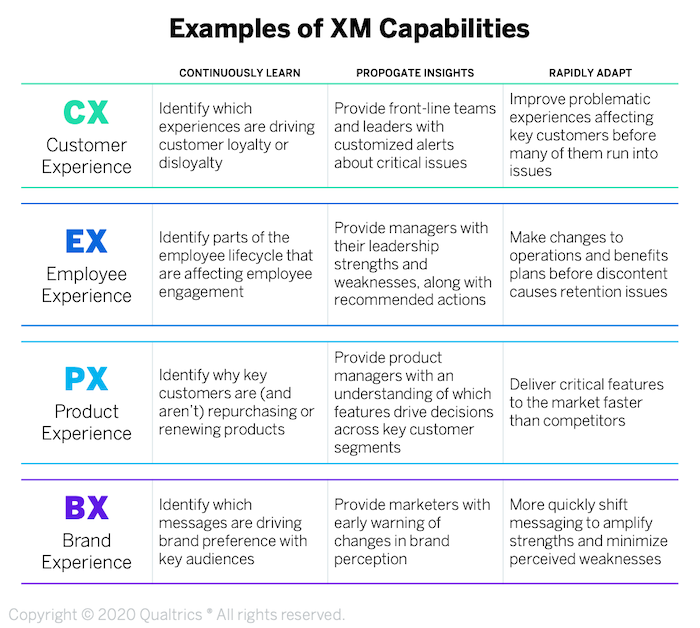
By combining a deepened understanding of how people think, feel, and behave with the technological capacity to uncover, share, and act upon those insights, XM will help organizations design and deliver consistently exemplary experiences, strengthening their employee and customer loyalty and keeping them ahead of their competition.
Tips for Taking Action
So how should a company go about building its Experience Management capabilities? Here are some tips for taking action:
Master the six XM Competencies
Companies go about establishing XM as an organizational discipline by adopting the XM Operating Framework, which is made up of Technology, Competency, and Culture. The core of this framework is the six XM Competencies: leading XM transformation, realizing value from XM, activating the organization around change, enlightening the organization with insights, responding to insights with actions, and disrupting the status quo through design.
Bring X-data and O-data together
At the core of XM is a constant flow of X-data and O-data. To do XM well, companies need to be capable of continuously capturing that data and transforming it into valuable insights. And while each of these two data types is valuable by itself, what really gives XM-centric companies the edge over competitors is the ability to combine these two types of data to generate richer and more actionable insights.
Understand how people process experiences
Companies should care about managing people’s experiences because experiences are how we interact with the world. So understanding how humans process experiences will allow an organization to design better, more emotionally resonant interactions. To help companies do this, we created the Human Experience Cycle, a simplified view of this very complex system, which looks at how experiences lead to perceptions, which in turn create attitudes, which set expectations and drive future behaviors.
Start small with a mind toward building scale
Instead of trying to tackle a number of XM projects that deliver a little bit of value, concentrate on doing a few little things very well with an eye towards propelling them across the organization. Initial XM projects should be focused on first understanding what works and then standardizing those practices, embedding them in your operating processes, collecting insights to reinforce and refine them, and then replicating those practices as you expand these XM efforts across the entire organization.
Improve adjacent experiences
The experiences a company delivers to one audience – like customers, employees, or partners – inevitably influences the experiences of other audiences. So to realize true value from XM efforts, companies should look across experience types (CX, EX, BX, and PX). CX and EX are particularly intertwined, and XM Institute research shows that companies with better CX and EX enjoy the strongest business results.
Assess your current maturity level
Organizations don’t become XM-centric overnight – they evolve through five stages of maturity as they gradually master the six Competencies and 20 Skills. To understand the current state of your program and develop plans for making progress towards your goals, first assess the maturity of your XM, CX, or EX program.




